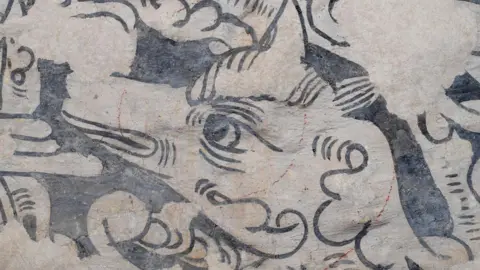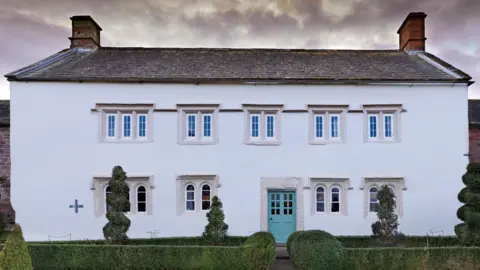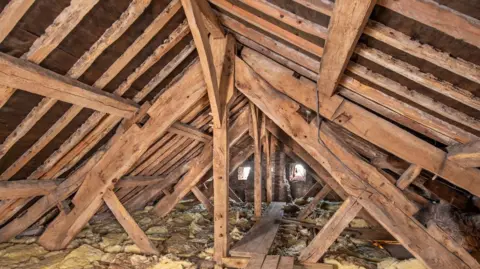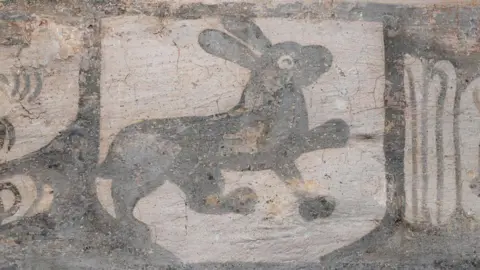Rare Tudor paintings show 'fantastical beasts'
 Historic England
Historic EnglandRare 16th Century wall paintings have been revealed at a former Tudor hunting lodge.
The Grotesque-style images were found behind failing plasterwork at The Ashes, in Inglewood Forest, near Ivegill, Cumbria
They feature fantastical beasts and foliage arranged in decorative panels, thought to be an imitation textile design.
In addition, scientific dating has confirmed that some of the earliest timbers in the building date from the early years of the reign of Elizabeth I.
Jen and Richard Arkell, the owners of The Ashes, said: "A small fragment of wall painting - similar to that seen at nearby Dacre Hall - has been visible in the house since before we acquired the property over 20 years ago.
"However, recent work to the primary upstairs bedroom revealed much more of the composition.
"Removing old failing plaster to find these remarkable motifs and faces looking back at us is a moment we will never forget."
 Historic England
Historic England Historic England
Historic EnglandRecent scientific dating using dendrochronology - a technique that analyses tree growth rings to determine age - established that the earliest part of the roof used timber, which was felled in or around the winter of 1561 to 1562.
The building has been given further recognition and protection by the Department for Culture, Media and Sport on the advice of Historic England.
As well as the Grade II* listing for the main building, it has been awarded Grade II listing to adjoining agricultural buildings and boundary walls.
 Historic England
Historic EnglandMyra Tolan-Smith, from Historic England, said: "The combination of motifs discovered here is unusual even by national standards.
"Together with the newly listed farm buildings, this discovery provides remarkable insight into the evolution of a significant Tudor hunting lodge into a working farm."
Markus Campbell-Savours, MP for Penrith and Solway, said: "It's quite clear these paintings were a remarkable find and it's wonderful news that they have now been protected as part of the building's listing.
"We can only hope that local people can enjoy them and the history of Cumbria for many years to come."
